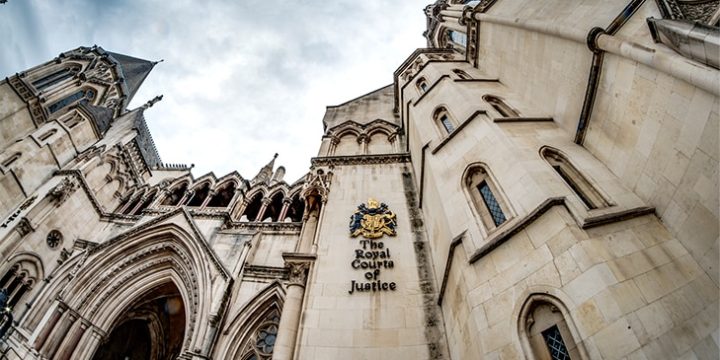News & Insights
Transparent consultations – Criticisms of consultation are well-placed when they complain that too much is still hidden from public view
It is now ten years since we developed the Consultation Charter. In that time, there has been only one significant change, when the Principle of Confidentiality was replaced by a Principle of Transparency. The change was occasioned by the implementation of the Freedom of Information Act and the move towards openness and transparency becoming the default position in the British public sector.
Somehow, however consultations remain far less open than they should. We can understand the scepticism of those who suspect that some public bodies are just going through the motions. Consultations, they claim, come out of the blue, are full of gobbledegook. No-one knows how they are going to be organised, nor what happens to anything said or sent in response. Submissions are sucked into a black hole – never to be seen again, and few of the critics will admit to having seen, let alone read, a proper Feedback report. No doubt such people will deny ever having seen a decision significantly influenced by a consultation.
Obviously this is an exaggerated caricature, but there is more than a germ of truth in allegations of unnecessary secrecy. It is only a partial defence, but organisations under tremendous financial pressure have clearly limited the budgets available for publicising their consultations. Local authorities which a few years ago started promoting the theme of You Said …We did may be less visible these days. Politicians at both national and local levels prefer to avoid talking about the painful decisions they have taken – no matter how well the consultation may have been run
Fortunately there are clear actions that can be recommended to improve the transparency of a consultation. Here are some of them, grouped in the three distinct phases of an end-to-end process.
Pre-consultation
- Announce the likelihood of a forthcoming consultation at the earliest possible moment. This will set expectations and help identify key stakeholders who may need to become involved in the development of the business case or potential options.
- Publish a pre-consultation plan offering stakeholders (and, if appropriate, the general public) practical opportunities for involvement
- Organise a dialogue about the issues likely to feature in the eventual consultation. Those who have published an ‘Issues’ paper have found it necessary to make the exercise ‘look and feel’ different from a consultation – otherwise it will be judged by more demanding standards. But they provide the opportunity effectively to say to everyone – “These are the difficult issues we have to tackle and before we sit down to develop ideas that we can then bring to you in the consultation, we would like to hear your priorities and preferences ….”
The dialogue
- Include details of how you arrived at your options in the consultation narrative. A recent Supreme Court case has confirmed that people need to be told why some alternative options have been rejected.
- Explain how people’s views will be reported to those who make decisions. Be specific as to who will analyse the data – and how they will do it. The process has to be fully and openly comprehensible to anyone who wishes to participate.
- Focus on the most transparent methods of dialogue – those where it is possible to see exactly who is saying what to whom. Accountable bodies like Overview & Scrutiny Committees or Healthwatch should hold more public consultation hearings – and with video streaming becoming technically easier and popular, everyone can follow proceedings. Use independent Chairpersons if necessary.
- Make more imaginative use of online initiatives. It is wrong to dismiss some of the innovative game-based applications (eg Budget simulators) as mere gimmicks; they have a role to play, but they have to be promoted.
- Exploit radio and television to raise awareness of a consultation. The underlying issues – from NHS changes to roads or housing are invariably interesting and lend themselves to traditional media, but it is essential to stress how open the process is for everyone
Post-consultation
- Ensure that output feedback (ie This is what people have said to us) is swift and accessible. It should also explain what else will be presented to decision-makers.
- Confirm the timeline for decisions, and if it is a formal public body, consider video-streaming so that consultees can tune in to see how the issues were debated. If there is a written Report, make it accessible in time for people to comment. If there is a PowerPoint presentation, make it available.
- Demonstrate how your Equalities Analysis addresses the impact of consultation proposals and is clearly taken into account by decision-makers – satisfying the all-important S.149 requirement to have ‘due regard’
- Provide a reasoned explanation of any decision that appears to run counter to the thrust of consultation responses
Greater transparency will not, of itself, restore the reputation of organisations whose engagement practices have been criticised. But we must remove the feeling that consultation is used to kick difficult issues into such long grass that it takes too much trouble to find them again. Even when consultations are conducted to best practice standards, too many public bodies are poor at communicating the process so that those who are interested can not follow the progress.
In 2015, the Institute intends to strengthen the transparency elements of its Quality Assurance process, and will expect its members and clients to respond by shedding more light on the darker recesses of their processes. At this festive time of the year, Let there be light!
TRIGGER POINTS
- Why not conduct a Transparency Audit of your most recent consultations? Or invite the Institute to do so from an independent perspective?
- Ask consultees whether they felt well-enough informed about your proposals …, and the process
- The recent Supreme Court decision referred to is R (ex parte Mosley) v London Borough of Haringey [2014] UKSC 56. See Briefing Note 12, available from the Institute
- Transparency is particularly required for local authority Budget consultations. It features in the new Masterclass – Engaging on Public Service Budgets.
This is the 270th Tuesday Topic; a full list of subjects covered is available for Institute members and is a valuable resource covering so many aspects of consultation and engagement



